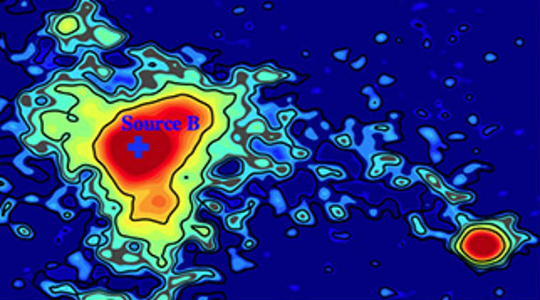Feb 26: Astronomers have spotted an enormous, glowing blob of gas in the distant universe, with no obvious source of power for the light it is emitting. Called an “enormous Lyman-alpha nebula” (ELAN), it is the brightest and among the largest of these rare objects, only a handful of which have been observed, the researchers said.

The newly discovered nebula was found at a distance of 10 billion light years in the middle of a region with an extraordinary concentration of galaxies. Researchers found this massive overdensity of early galaxies, called a “protocluster,” through a novel survey project led by Zheng Cai, Hubble postdoctoral fellow at University of California, Santa Cruz in the US.
“Our survey was not trying to find nebulae. We"re looking for the most overdense environments in the early universe, the big cities where there are lots of galaxies,” said Cai, who is first author of a paper on the discovery to be published in the Astrophysical Journal.
“We found this enormous nebula in the middle of the protocluster, near the peak density,” Cai said. ELANs are huge blobs of gas surrounding and extending between galaxies in the intergalactic medium. They are thought to be parts of the network of filaments connecting galaxies in a vast cosmic web.
Previously discovered ELANs are likely illuminated by the intense radiation from quasars, but it is not clear what is causing the hydrogen gas in the newly discovered nebula to emit Lyman-alpha radiation (a characteristic wavelength of light absorbed and emitted by hydrogen atoms), the researchers said.
The newly discovered ELAN is known as MAMMOTH-1. “It"s a terrifically energetic phenomenon without an obvious power source,” said study co-author J. Xavier Prochaska, Professor at University of California, Santa Cruz.





Comments
Add new comment